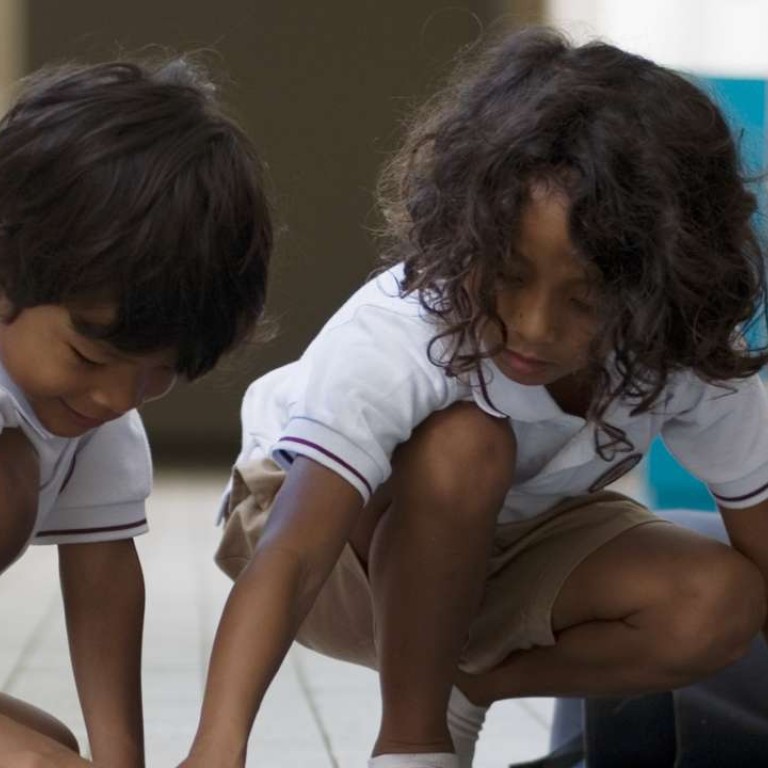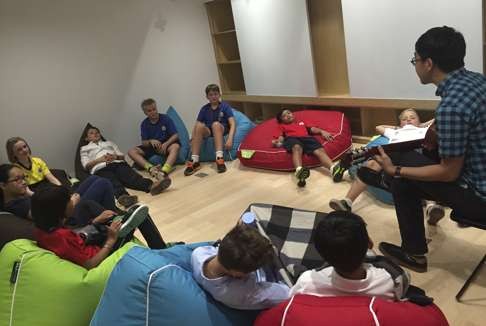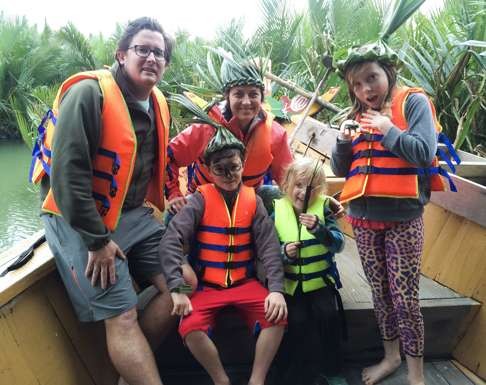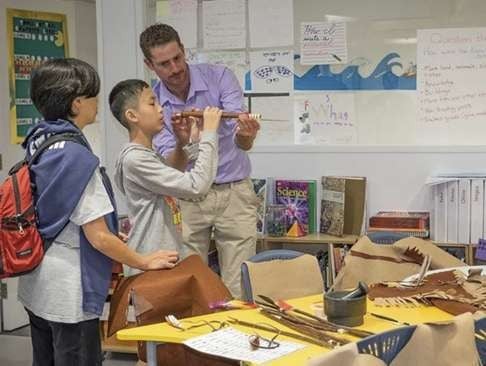
How Hong Kong schools are swapping sit-in-a-chair education for a more active style
Physically active learning bolsters academic success, health and happiness – but selling the benefits to educators who are pushed for results presents challenges
When George Davis, aged 10, needs a “brain break” at school, he helps his teachers move the table and chairs around, or he pushes a trolley full of books. “Physically active learning helps George to keep focused. His teachers recognise the fact that he needs ‘heavy’ exercise and quick ‘movement’ breaks. They are flexible about his requirements and encourage him with this,” says his mother, Robyn Davis.
George attends The Harbour School in Ap Lei Chau. According to principal Christine Greenberg, the learning space is designed to encourage faculty and students to move around, brainstorm and discuss ideas. This approach has benefited every type of learner, be they mainstream, gifted or with learning difficulties, she says.
“Having worked with students from age four to 18, I have never met one who wanted to sit in a chair the entire time. I have, however, met plenty of students who like to get up for various reasons during the course of a 45- to 60-minute class. The classes I’ve observed with the strongest level of student engagement have been those where the teacher has allowed for variety, in terms of activity and movement within the class,” says Greenberg.
Given the number of children in Hong Kong that are depressed or attempt suicide, increased physical activity during the school day is worthy of immediate attention
The premise that learning should take place seated quietly at a table and listening is bizarrely archaic, says Virginia Spielmann, occupational therapist and clinical director of Spot HK Children’s Interdisciplinary Therapy Centre. She believes the emphasis on academic learning as taught through visual and auditory processing (watch the teacher and listen to the lesson) treats a complex human being in segments, rather than as an integrated whole.
“We can’t hope to teach an integrated, self-organising and complex system like a human being by just stimulating certain regions of their brain. We do our little human beings a disservice when we approach education in this reductionist, static and mono-sensory manner,” she says.

Sitting young children in a chair or on a spot and asking them to pay attention and learn is one of the hardest challenges you can set them, she explains. Until age seven, a child is a sensory-motor being, developing postural stability and core strength, refined fine motor control (to hold a pencil and write), gross motor proficiency and anticipatory movements in space and time. Toddlers and preschoolers are still in the stage of needing to practise movements in big and uncoordinated ways as often as possible, so that they can develop the tiny and control movements that come later in life.
Hong Kong has limited space and movement opportunities, especially in the urban and built-up areas. Children do not tend to climb trees, run, ride bikes or build bases and forts. They need these motor experiences
“Hong Kong has limited space and movement opportunities, especially in the urban and built-up areas. Children do not tend to climb trees, run, ride bikes or build bases and forts. They need these motor experiences wherever possible. Of course, asking our children to sit still for hours on end compounds the problem immensely. The more movement we can provide, the better the learning and development of the whole person,” says Spielmann.
According to Dr Robin Mellecker at University of Hong Kong’s Institute of Human Performance, physically active learning offers children a multitude of lifelong learning, behavioural, health and emotional wellness benefits. It promotes cognitive functioning: the brain secretes neurotransmitters that have been shown to improve scores in individual subjects as well as overall academic performance. Cognitive processes related to problem solving and behaviour self-regulation are also improved, which is particularly important for children with attention disorders.

Melissa Shadforth’s children, Madeleine, Fin and Amelia, all attend Glenealy School in Mid-Levels. They prefer to move while learning and use standing desks in their classrooms.
“All three have been diagnosed with dyslexia, and standing and gently moving seems to work for them. I feel the standing desks present one less rule or requirement to think about while they are processing all of the other spelling rules and teacher/school expectations. Perhaps it allows the energy to flow more freely through the body and send messages more efficiently within the nervous system,” says Shadforth, a community ambassador for SisuGirls, sport and adventure programmes designed to bolster confidence in girls.
The most significant benefits of being physically active during childhood are the short- and long-term impacts on health, advises Mellecker. Active learning can help reduce the risks of childhood obesity, spine disorders, cardiovascular disease and diabetes. It can also support the mental health of children who feel overwhelmed by the educational stresses placed by a society that is driven by results and academic success.
“Given the number of children in Hong Kong that are depressed or attempt suicide, increased physical activity during the school day is worthy of immediate attention. The governments of Australia, the United States and Canada have released sedentary guidelines to decrease the amount of time children spend seated and increase the number of ‘active breaks’ throughout the day. Unfortunately, Hong Kong has not realised the benefits of keeping the younger population active, with a high percentage of the population focused on results-based learning and hours of seated study. Researchers have shown that children in Hong Kong also spend an average of four hours after school in study related activities, which are sedentary,” says Mellecker.
Spielmann believes small classroom sizes and the cost implications of refurbishing them to accommodate physically active learning may deter schools from adopting this approach. Selling the benefits to educators who are pushed for results and have been trained in traditional teaching methods also presents challenges, says Mellecker. Additionally, educators and parents may be concerned that physically active students will be a distraction to their fellow classmates.

Melissa Brewster, mother of three, refutes such thinking. Her youngest daughters, Gia and Grace, attend Casa Dei Bambini; her eldest daughter, Gemma, attends the International Montessori School. Students are free to move around throughout the day, yet there is a sense of calm and order in the classrooms, she says. The Montessori approach, which firmly advocates child-centred physically active learning, has met the diverse personalities and learning needs of all three of her children.
“I’ve found Casa Dei Bambini to be social for the children and, at the same time, extremely orderly. At IMS, only Putonghua lessons are sedentary. This doesn’t seem to bother Gemma since it is only 45 minutes out of her day that she is seated for a lesson. The ability to sit on a mat on the floor, at a table, or stand allows children to be comfortable while they are learning. There is almost an instilled desire to learn more, as a result,” says Brewster.

According to Maly Peny, communications manager at IMS, children understand from an early age that they are all part of a group and need to be respectful of others’ time and space. “They learn that they need to live in society and that whatever interruption they have will affect the balance of the whole classroom. Physical learning is an intrinsic part of the Montessori pedagogy. As Benjamin Franklin put it: “Tell me and I forget, teach me and I may remember, involve me and I learn.”
